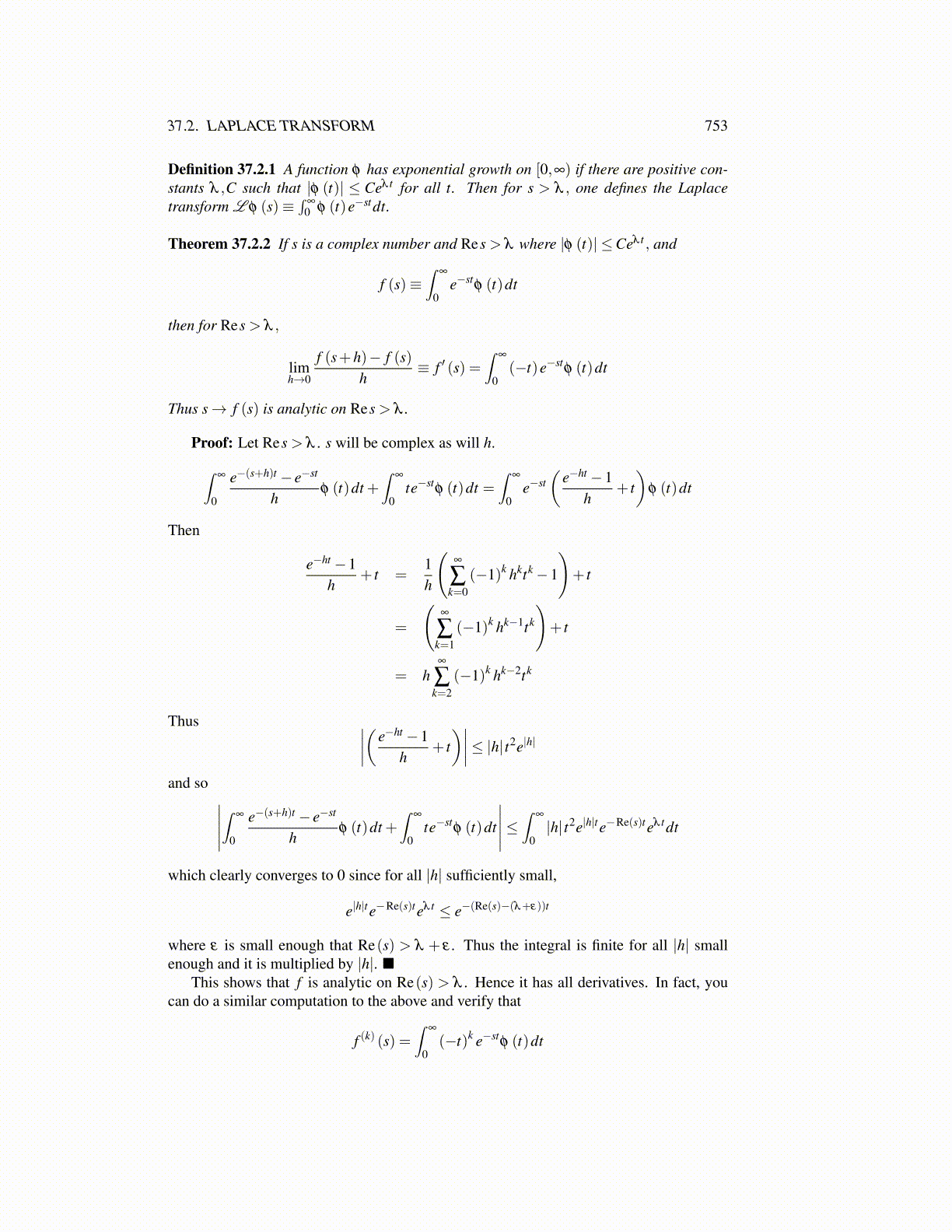
37.2. LAPLACE TRANSFORM 753
Definition 37.2.1 A function φ has exponential growth on [0,∞) if there are positive con-stants λ ,C such that |φ (t)| ≤ Ceλ t for all t. Then for s > λ , one defines the Laplacetransform L φ (s)≡
∫∞
0 φ (t)e−stdt.
Theorem 37.2.2 If s is a complex number and Res > λ where |φ (t)| ≤Ceλ t , and
f (s)≡∫
∞
0e−st
φ (t)dt
then for Res > λ ,
limh→0
f (s+h)− f (s)h
≡ f ′ (s) =∫
∞
0(−t)e−st
φ (t)dt
Thus s→ f (s) is analytic on Res > λ .
Proof: Let Res > λ . s will be complex as will h.∫∞
0
e−(s+h)t − e−st
hφ (t)dt +
∫∞
0te−st
φ (t)dt =∫
∞
0e−st
(e−ht −1
h+ t)
φ (t)dt
Then
e−ht −1h
+ t =1h
(∞
∑k=0
(−1)k hktk−1
)+ t
=
(∞
∑k=1
(−1)k hk−1tk
)+ t
= h∞
∑k=2
(−1)k hk−2tk
Thus ∣∣∣∣(e−ht −1h
+ t)∣∣∣∣≤ |h| t2e|h|
and so ∣∣∣∣∣∫
∞
0
e−(s+h)t − e−st
hφ (t)dt +
∫∞
0te−st
φ (t)dt
∣∣∣∣∣≤∫
∞
0|h| t2e|h|te−Re(s)teλ tdt
which clearly converges to 0 since for all |h| sufficiently small,
e|h|te−Re(s)teλ t ≤ e−(Re(s)−(λ+ε))t
where ε is small enough that Re(s) > λ + ε . Thus the integral is finite for all |h| smallenough and it is multiplied by |h|. ■
This shows that f is analytic on Re(s) > λ . Hence it has all derivatives. In fact, youcan do a similar computation to the above and verify that
f (k) (s) =∫
∞
0(−t)k e−st
φ (t)dt